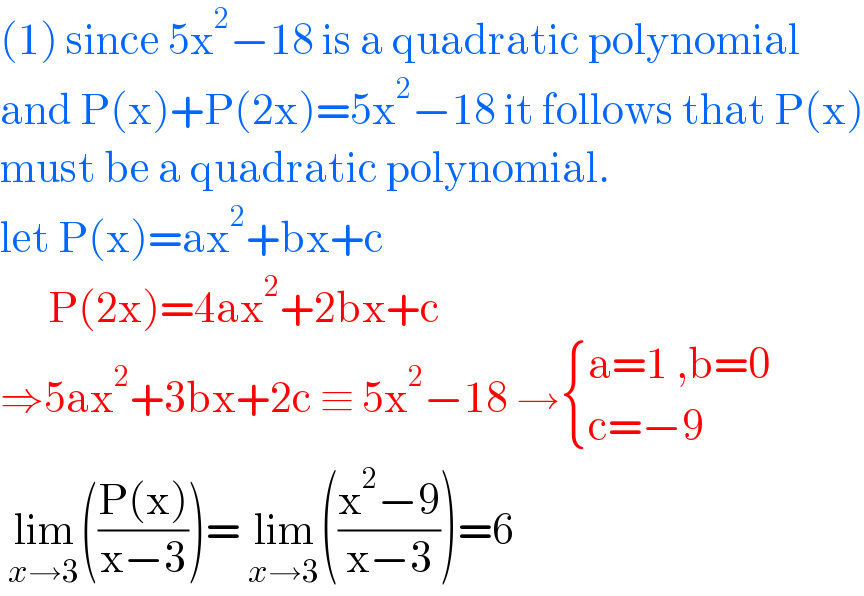
Question and Answers Forum
Question Number 131745 by liberty last updated on 08/Feb/21

Commented by guyyy last updated on 18/Feb/21

Commented by guyyy last updated on 18/Feb/21

Commented by guyyy last updated on 18/Feb/21

Commented by guyyy last updated on 18/Feb/21

Answered by bemath last updated on 08/Feb/21
![(2) lim_(n→∞) [(1+(1/n^2 ))^n^2 ]^((4(sin (π/(2n))))/(π/(2n))) = e^(lim_(n→∞) (((4sin (π/(2n)))/(π/(2n))))) = e^4](Q131747.png)
Answered by bemath last updated on 08/Feb/21

Answered by bemath last updated on 08/Feb/21

Commented by guyyy last updated on 13/Feb/21

